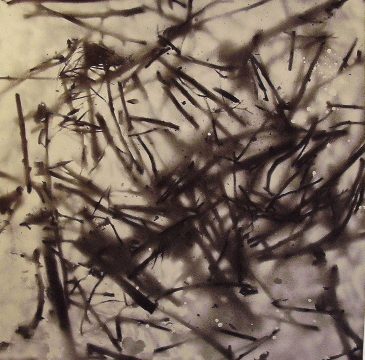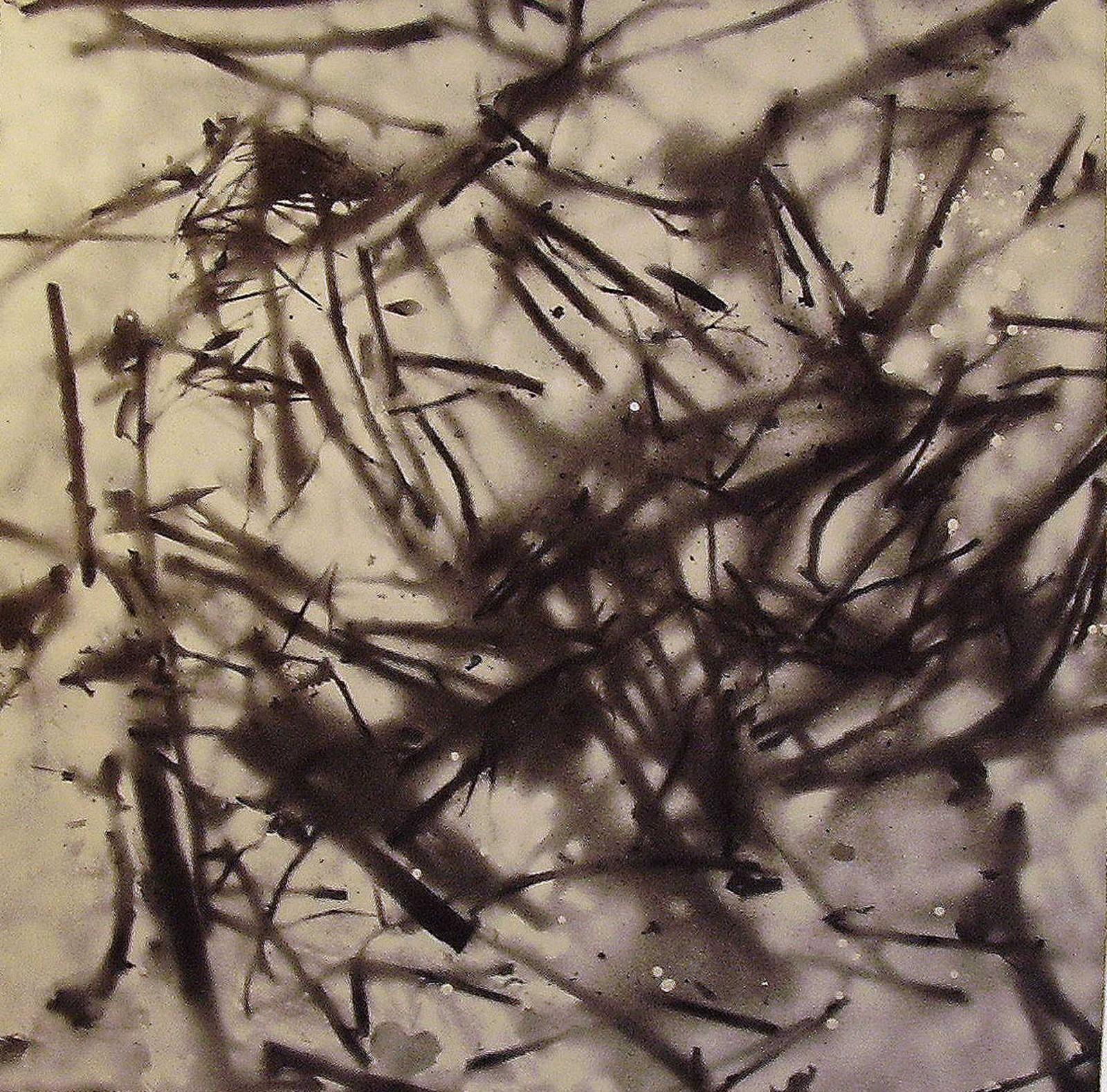I was just minding my own business last Thursday afternoon, sunbathing on the roof of Warch Campus Center. Except that it was raining, and the sun was sleeping. I felt exposed up there. I was soaked to the bone, and I hadn’t put deodorant on. I reeked of myself. The wind changed direction, and out of the corner of my ear I overheard an incantation in that ancient language no one remembers. I’m not entirely sure where it came from, perhaps it belongs between representation and abstraction. I’ve long lost my ability to speak the tongue of antiquity, but a shard of my timeworn soul understood the message. “Dry off and go to the Gustavo Fares gallery talk on Abstract Organic.” I chuckled to myself, because it always knows.

I took the fire pole down. I landed with a thud on the wet concrete and found shelter, shaking myself dry like a dog. The pitter patter of the rain was beginning to retreat, so I took my chance and made a run for it towards the Wriston Art Center. Entering the temple of arts, I was met by a delightful assemblage of people and snacks, so naturally I interacted with a couple acquaintances and a handful of jelly beans. When the clock struck 4:30, we migrated into the gallery and took our seats. Fares’ work surrounded us on the walls, casting the room in an uncanny nostalgia.
Dr. Gustavo Fares is a Professor of Spanish and Latin American studies at Lawrence University, and additionally holds a masters degree in art. He has been an active artist his entire life. Through his extensive artistic career, he has traversed both abstract and representative art. Abstract Organic however, toes the line between these worlds. What lies in the center of these two extremes? What is left over?
Fares is a soft-spoken man, with a sense of humor that’s almost deadpan, without being sarcastic or disingenuous. He began to take us into his world between abstraction and representation, leading with the process he used to make this work. He would start by painting a canvas or piece of paper a color. Pretty typical start for most painters. Next, Fares gathered tree branches and placed them on the painting, before depositing a layer of spray paint over the sticks. Removing the branches leaves a dreamy, almost subconscious-esque image behind. The pieces almost look like film negatives, clearly images of branches, but at the same time they are nearly unrecognizable abstractions of the usual experience we have of the forest.
Representation is what we are used to in art. No matter how much abstract art is made, representing the world around us is the basis for visual art. Portrayal, communication and translation of our senses into the physical. Abstraction on the other hand, is nonpictoral, a removal, almost a surgical detachment of the image from the rules of the physical world. Looking at Abstract Organic places the viewer in a liminal space between an image and a forgotten childhood memory. The work is also a record. A documentation of branches. Without being told, I wouldn’t have known if they were paintings and photographs. Abstract Organic is quintessentially between. It’s the moment before you fall asleep. A dream you remember one moment of. A language you have forgotten.

